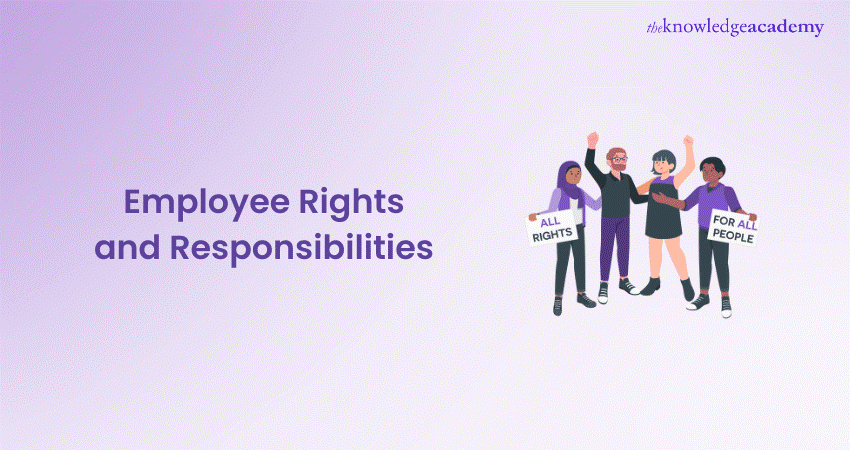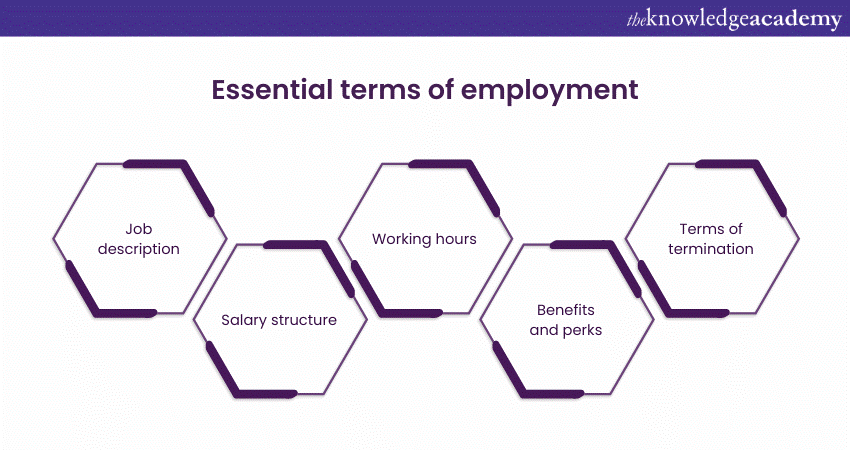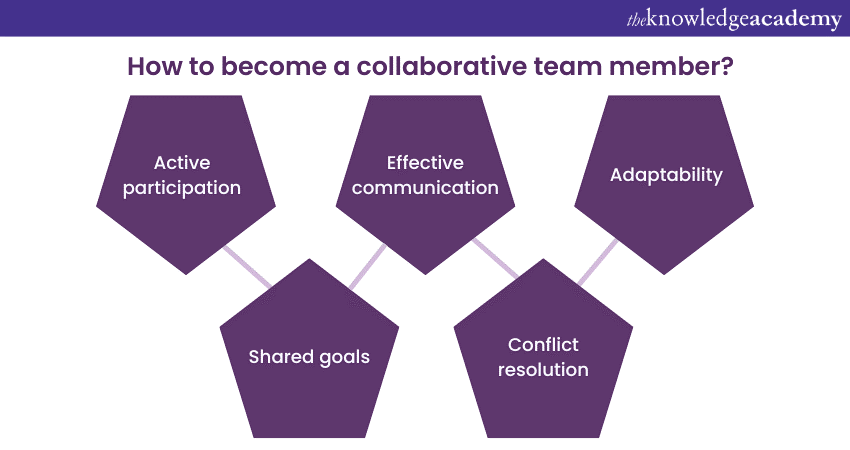We may not have the course you’re looking for. If you enquire or give us a call on +971 8000311193 and speak to our training experts, we may still be able to help with your training requirements.
Training Outcomes Within Your Budget!
We ensure quality, budget-alignment, and timely delivery by our expert instructors.

At the heart of every organisation lie its employees, whose collaboration and balance are pivotal for achieving success and cohesion. From ensuring timely compensation to a secure working environment, there exist numerous Employee Rights and Responsibilities. However, alongside these privileges come significant responsibilities.
This blog will discuss the intricate dynamics of Employee Rights and Responsibilities within the workplace. Throughout this blog, you can delve into the landscape of Rights and Responsibilities of an Employee in detail. Join us to explore everything in detail.
Table of Contents
1) What are Employee Rights and Responsibilities?
2) Essential Rights of an Employee
3) Responsibilities of Employees in the workplace
a) Collaborative team member
b) Pursuing common objectives
c) Participation in Orientation and Meetings
d) Managerial duties and expectations
e) Safe work practices
f) Prohibition of offensive conduct
g) Compliance with company regulations
4) Conclusion
What are Employee Rights and Responsibilities?
The bond between employees and employers is guided by a set of principles. Recognising and honouring those principles is essential for fostering a nurturing and thriving work culture. Employee Rights further multiple strategies to safeguard individuals within the workplace. While these rights may vary based on the business and sector, some fundamental rights are always applicable. Essential elements include the freedom from discrimination, the right to personal privacy, a safe working environment, fair pay, and the ability to participate in collective bargaining through trade unions.
These rights also serve as the cornerstone of a positive environment. That environment should value each employee's welfare, dignity, and fair treatment.
Essential Rights of an Employee
Every Employee has several basic rights while they are employed. An encouraging work environment is built on these rights, which guarantee that employees are treated with respect and decency. The fundamental rights that each Employee in the workplace is entitled to are outlined here:
1) Terms of employment
In order to promote an open and mutually productive working relationship, it is essential that both Employers and Employees comprehend the terms of employment. These five elements make up the fundamental terms of employment:

a) Job description: Employees are entitled to a clear and comprehensive job description. This also covers the duties that are expected of them, and where they fit in the organisational structure. In addition, it includes any special responsibilities that are particular to their position.
b) Salary structure: It is critical that the pay structure be understood. This mostly includes the agreed-upon remuneration, the mode of payment, and so on. Employees should also be aware of the factors that determine their pay, including any bonuses or incentives.
c) Working hours: Employees must know about the normal working hours and if there is schedule flexibility. Along with any necessary overtime information, this also covers any considerations for working outside of usual business hours.
d) Benefits and perks: Employees should know about all benefits related to their work in addition to their pay. This mostly includes their retirement schemes, health insurance, paid time off, and other additional benefits.
e) Terms of termination: There should be a clear definition of the employment termination conditions. Mostly notice durations, and any severance benefits fall under this category. Both employers and Employees benefit from understanding the processes and termination implications.
The above-discussed components can create a thorough understanding of the employment relationship. They also lay the groundwork for an easy and open connection between employers and Employees
2) You must not be discriminated against
Discrimination occurs when Employees face unjust treatment due to traits that are protected under the 2010 Equality Act. Mostly, those traits include race, religion, sexual orientation, age, disability, gender reassignment, marriage, and pregnancy. You must check if you are legally protected against discrimination at work. Additionally, remember to find out if your employer is at fault and determine which type of discrimination is being committed.
3) Timely salary and bonus payments
Employees are entitled to timely payment of their salaries and any promised bonuses. Moreover, timely and regular payment is essential to maintaining the workforce's financial stability. Hence, employers are required to follow the specified payment schedule.
4) Ensuring Health and Safety
Every Employee holds the right to work in a safe and conducting environment for their well-being. Hence, employers should provide a work environment that is safe and secure to their Employees. They should also implement safety measures, providing necessary safety equipment. Additionally, proper training is essential to ensure Employees' safe performance.
5) Minimum wage entitlement
Every Employee is entitled to receive at least the minimum wage set by governmental regulations. This varies based on the region and is designed to establish a baseline standard for fair compensation.
6) Leave and vacation benefits
Maintaining a healthy work-life balance requires being aware of and making use of leave and vacation benefits. Let's examine how to utilise these Employee benefits to the fullest:

1) Familiarise yourself: Take the time to understand the company's leave and vacation policies. Knowing the details ensures you can make informed decisions about your time off.
2) Plan ahead: When possible, plan your leaves in advance. This can result in better team coordination and the seamless continuation of work.
3) Ensure open communication: When seeking time off, you must discuss with your supervisor or the HR department. This can also ensure a hassle-free experience and process comprehension.
4) Respect policies: Adhere to company policies regarding the maximum duration and frequency of leaves. Respecting these guidelines ensures fairness and consistency for all Employees.
5) Utilise well-deserved breaks: Take advantage of your vacation benefits to recharge and rejuvenate. A well-rested Employee is more likely to be productive and engaged upon return.
By embracing these principles of managing leave and vacation benefits, Employees can foster a positive work environment. Moreover, it also helps improve work-life balance and Employee well-being.
7) Understanding gratuity
An employee is entitled to a gratuity if they have worked for the company for at least five years. You can receive this compensation while leaving the company, based on your commitment and service.
8) Provident Fund provisions
Employees have a retirement benefit called a PF, which is accrued over the course of their employment. Once you retire, this fund can offer you financial support and give you a certain level of financial security.
9) Obligations during the notice period
Throughout the notice period, employers and Employees have multiple Rights and Responsibilities. This is mostly the period from the date of resignation to the last employment day. You will be expected to perform your jobs during this period. In addition, employers must adhere to the correct protocols as specified in employment contracts.
10) Protection against sexual harassment
One of the essential rights of every Employee is a sexual harassment-free workplace. To ensure this, employers must take the following steps:
a) Policy implementation: All Employees must be made aware of and able to comprehend clearly specified policies. These policies define harassment, describe how complaints are made, and describe what happens when harassment occurs.
b) Prevention measures: Arranging frequent training sessions and raising awareness are proactive steps. These steps can promote a culture that forbids harassment and a courteous workplace.
c) Reporting mechanisms: It is necessary to provide clear, and private channels for reporting incidents. This can also comfort people coming forward without worrying about facing consequences.
d) Investigation procedures: In order to effectively combat sexual harassment, comprehensive, unbiased inquiries into cases must be reported. These must be conducted in accordance with your discretion.
e) Disciplinary action: Employers must implement appropriate disciplinary measures, which may include counselling or termination. While doing so, they must consider the seriousness of concerns in response to verified claims.
f) Protection from retaliation: To ensure job security and a positive work environment, employees who report occurrences should be protected from reprisal.
g) Education and awareness: Workplace cultures that are hostile to sexual harassment are fostered by ongoing education initiatives, such as training sessions and workshops. It is critical to emphasise consent, respect, and the value of a secure and welcoming atmosphere.
Employers can create a harassment-and-discrimination-free work environment through these elements. This dedication also helps an organisational culture to focus on professionalism, equality, and respect. Promoting an equitable and encouraging work environment requires your understanding of these rights. By valuing their Employees and fostering a positive work environment, employers and Employees can ensure that these essential rights are upheld.
Unlock your potential with our Digital Transformation in HR Training – sign up now!
Responsibilities of Employees in the workplace
Employees are essential to the success and smooth operation of the workplace. They are mostly responsible for carrying out their allocated responsibilities. Sustaining a positive and effective work environment requires understanding and carrying out these obligations. The following points can adhere you to the principal duties that Employees should fulfil at work:
a) Collaborative team member
In fostering a positive workplace, understanding and embracing collaborative team dynamics are essential. Let's explore how to be an effective collaborative team member:

1) Active participation: To promote a collaborative environment, you must actively participate in team meetings. Seek out chances to impart your knowledge and perspectives, enhancing the team's overall intelligence.
2) Effective communication: You should make sure that your teammates can clearly and openly communicate. In addition, you must create an atmosphere where everyone feels heard and accept constructive criticism.
3) Adaptability: Embrace flexibility and adapt to changing team dynamics, demonstrating a willingness to work harmoniously. Be open to new ideas and readily adjust your approach to align with the evolving needs of the team and the organisation.
4) Shared goals: Align individual efforts with team objectives, emphasising collective success over personal achievements. Cultivate a mindset that values collaboration, ensuring that your actions contribute positively to the achievement of common goals.
5) Conflict resolution: Approach conflicts constructively, seeking resolutions that benefit the team's overall well-being. Be adept at navigating disagreements, focusing on finding common ground and maintaining a harmonious working relationship.
By embodying these collaborative principles, you contribute to a team-oriented culture that elevates the entire workplace environment.
b) Pursuing common objectives
A collective commitment to common goals strengthens the company's position and promotes a sense of unity among team members. So, Employees should align their efforts with the organisation's goals. Let's explore the principles involved in Pursuing common objectives:
1) Unified vision: Develop a shared vision within the team, ensuring that every member understands and aligns their efforts with common objectives. A cohesive vision provides a roadmap for collective achievement.
2) Goal clarity: You shouldn't leave any space for doubt when defining and communicating shared goals. Team members may put their efforts more effectively and produce meaningful results. To do this, they should have a clear knowledge of the common objectives.
3) Collaboration: Encourage team members to actively collaborate by fostering a collaborative culture. To encourage a group approach to problem-solving, encourage candid conversation and the sharing of ideas.
4) Individual contribution: Recognise and value each team member's unique contributions to achieving common objectives. Acknowledging diverse skills and strengths enhances the overall capability of the team.
5) Continuous alignment: Regularly revisit and realign team objectives as needed, considering evolving circumstances. A dynamic approach ensures that common objectives remain relevant and adaptable to the ever-changing landscape.
By pursuing these principles of pursuing common objectives, teams can foster a collaborative environment that maximises their collective potential, leading to shared success within the workplace.
c) Participation in Orientation and Meetings
Employees are responsible for participating in orientation sessions and meetings organised by the company. This ensures that they stay informed about the organisation's policies, procedures, and any updates relevant to their roles. Actively engaging in such sessions reflects a commitment to staying well-informed and aligned with company directives.
d) Managerial duties and expectations
For those in managerial positions, additional responsibilities come into play. This involves overseeing and guiding team members, ensuring that they meet their targets and goals. Effective leadership and management contribute significantly to the overall success of the organisation.
e) Safe work practices
Adhering to safe work practices is a fundamental responsibility for every Employee. This includes using safety equipment as required, following established safety guidelines, and proactively identifying and addressing potential hazards. Prioritising safety not only safeguards the individual but also contributes to a secure and healthy work environment.
f) Prohibition of offensive conduct
Maintaining a respectful and inclusive workplace is a shared responsibility. Employees must refrain from engaging in offensive conduct, including discriminatory behaviour or harassment. Treating colleagues with respect and dignity fosters a positive work culture and contributes to a supportive atmosphere for all.
Ignite change and foster inclusivity with our Direct and Indirect Discrimination Training – sign up now!
g) Compliance with company regulations
Respecting the policies of an organisation can keep the workplace productive and peaceful. Let us examine the fundamental concepts related to guaranteeing adherence:

1) Familiarity with policies: Employees ought to be knowledgeable on the rules and policies of the company. They should also comprehend how they apply to their behaviour on the job.
2) Timely updates: Make sure that Employees are aware of and follow the most recent policies. They should also keep themselves updated on any modifications or changes to company policies.
3) Training and awareness: To improve employee understanding of corporate policies, provide frequent training sessions. This can result in reduction of inadvertent infractions and fostering a compliance culture.
4) Accountability: Hold Employees accountable for compliance with company regulations. Establish clear consequences for violations, promoting a sense of responsibility among the workforce.
5) Reporting mechanism: Implement an effective reporting mechanism for Employees to raise concerns or seek clarification regarding company regulations. This encourages transparency and ensures swift resolution of any compliance-related issues.
6) Regulatory alignment: Ensure that company regulations align with legal requirements and industry standards. Frequently review and update policies to reflect changes in the business landscape and legal framework.
7) Continuous monitoring: Establish mechanisms for continuous monitoring of compliance. Regular audits and assessments help identify areas for improvement and ensure ongoing adherence to company regulations.
These guidelines can help organisations to build a strong foundation. They can also encourage an attitude of accountability and responsibility among Employees, improving the success of the workplace. These responsibilities also allow Employees to play a decisive role in the organisation's overall success and positive culture.
Conclusion
We hope this blog has thoroughly familiarised you with Employee Rights and Responsibilities. Additionally, recognising and respecting them is vital for a thriving workplace. This symbiotic relationship also fosters a positive atmosphere, ensuring fairness, clear communication, and collaboration. Embracing these principles benefits individuals and contributes to the overall success and harmony of the organisation.
Empower your HR journey with our HR Courses – sign up today!
Frequently Asked Questions

Yes, employee status significantly affects Rights and Responsibilities. Employment classification determines entitlements to benefits and protections under labour laws. They also talk about employer obligations and differences between working-mode arrangements.

Express terms refer to explicitly stated agreements between employer and employee, outlining rights and duties. Implied terms are unwritten, yet legally binding obligations inferred by law, customs, or previous dealings. These terms can shape Employee Rights and Responsibilities within the employment relationship.

The Knowledge Academy takes global learning to new heights, offering over 30,000 online courses across 490+ locations in 220 countries. This expansive reach ensures accessibility and convenience for learners worldwide.
Alongside our diverse Online Course Catalogue, encompassing 17 major categories, we go the extra mile by providing a plethora of free educational Online Resources like News updates, Blogs, videos, webinars, and interview questions. Tailoring learning experiences further, professionals can maximise value with customisable Course Bundles of TKA.

The Knowledge Academy’s Knowledge Pass, a prepaid voucher, adds another layer of flexibility, allowing course bookings over a 12-month period. Join us on a journey where education knows no bounds.

The Knowledge Academy offers various HR Courses, including the Certified HR Advisor, Certified Training and Development Manager, and Category Management Training. These courses cater to different skill levels, providing comprehensive insights into Continuous Performance Management.
Our Business Skills Blogs cover a range of topics related to Employee Rights and Responsibilities, offering valuable resources, best practices, and industry insights. Whether you are a beginner or looking to advance your Business skills, The Knowledge Academy's diverse courses and informative blogs have got you covered.
Upcoming HR Resources – Learn about Human Resources Batches & Dates
Date
 Employment Law Training
Employment Law Training
Fri 3rd Jan 2025
Fri 7th Mar 2025
Fri 2nd May 2025
Fri 4th Jul 2025
Fri 5th Sep 2025
Fri 7th Nov 2025







 Top Rated Course
Top Rated Course



 If you wish to make any changes to your course, please
If you wish to make any changes to your course, please


